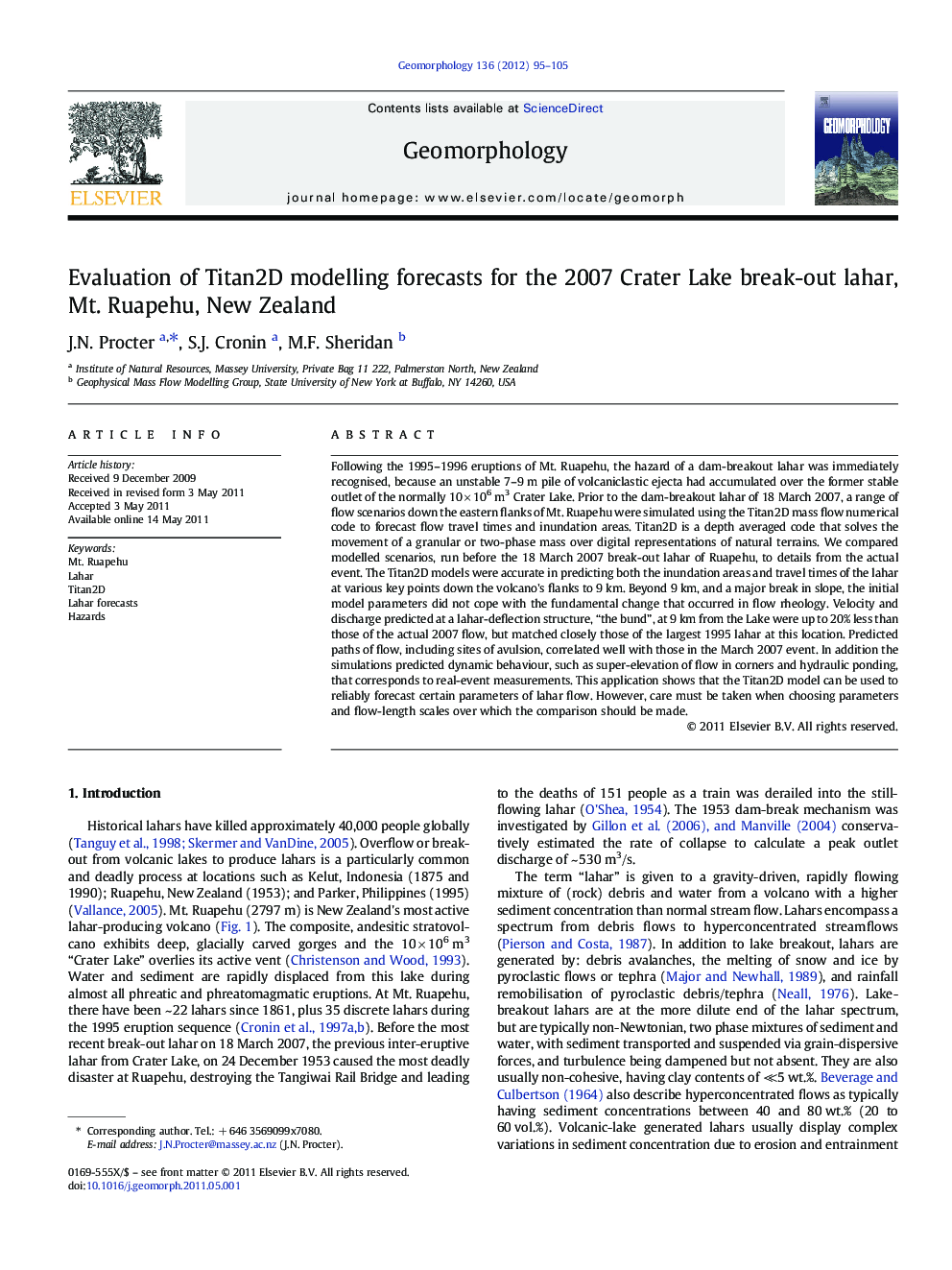| کد مقاله | کد نشریه | سال انتشار | مقاله انگلیسی | نسخه تمام متن |
|---|---|---|---|---|
| 4685527 | 1349494 | 2012 | 11 صفحه PDF | دانلود رایگان |

Following the 1995–1996 eruptions of Mt. Ruapehu, the hazard of a dam-breakout lahar was immediately recognised, because an unstable 7–9 m pile of volcaniclastic ejecta had accumulated over the former stable outlet of the normally 10 × 106 m3 Crater Lake. Prior to the dam-breakout lahar of 18 March 2007, a range of flow scenarios down the eastern flanks of Mt. Ruapehu were simulated using the Titan2D mass flow numerical code to forecast flow travel times and inundation areas. Titan2D is a depth averaged code that solves the movement of a granular or two-phase mass over digital representations of natural terrains. We compared modelled scenarios, run before the 18 March 2007 break-out lahar of Ruapehu, to details from the actual event. The Titan2D models were accurate in predicting both the inundation areas and travel times of the lahar at various key points down the volcano's flanks to 9 km. Beyond 9 km, and a major break in slope, the initial model parameters did not cope with the fundamental change that occurred in flow rheology. Velocity and discharge predicted at a lahar-deflection structure, “the bund”, at 9 km from the Lake were up to 20% less than those of the actual 2007 flow, but matched closely those of the largest 1995 lahar at this location. Predicted paths of flow, including sites of avulsion, correlated well with those in the March 2007 event. In addition the simulations predicted dynamic behaviour, such as super-elevation of flow in corners and hydraulic ponding, that corresponds to real-event measurements. This application shows that the Titan2D model can be used to reliably forecast certain parameters of lahar flow. However, care must be taken when choosing parameters and flow-length scales over which the comparison should be made.
Research highlights
► The two-phase flow model, Titan2D, was applied to forecast lahars from Mt. Ruapehu.
► The forecasted simulations compared well to the March 2007 lake break-out lahar.
► Simulations predicted physical characteristics of the lahar relating to geomorphology.
► Flow simulation applications necessitate an understanding of the model inputs.
► Comparisons to real world events require users to recognise associated uncertainties.
Journal: Geomorphology - Volume 136, Issue 1, 1 January 2012, Pages 95–105